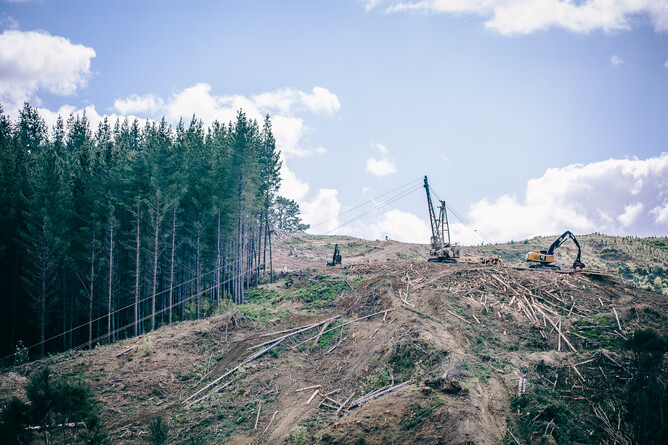I applaud the Acting National Director of the Forest Industry Safety Council (FISC), John Lowe, for saying it as it is, as he took the opportunity to put pen to paper. I was so impressed to hear it from FISC that I felt it was important to copy to the industry. FICA will continue to make sure the challenges of the industry are communicated clearly and others are made aware of supply chain pressures. It’s important that we get into a room together and have these courageous conversations. John’s piece follows:
Relationships are everything in forestry, especially when it comes to safety. From the workers who plant and harvest the forests, to the Contractors who employ them, the Forest Managers who select the Contractors and the Forest Owners big and small. I’ve often thought the supply chain is just a fancy way of describing how all these relationships interact. Everyone in forestry has a part to play when it comes to making the forest safer.
Mostly in forestry these relationships work well but understanding how decisions at one level affect the safety of another, offers the biggest opportunity to improve the safety of the workers in the forest.
This really struck me in late June when I was chatting to a forestry contractor in the Wairarapa about Centerport Wellington being full of wood. Trucks were being turned away. Harvesting was continuing and skid sites in the lower North Island were filling up with piles of logs. The forestry supply chain is so complex and connected, but somehow – even with all the comms technology available – the communication flow between port to exporter, to transport companies to forest manager, to harvesting contractor had fallen over. Worker safety was at risk as they continued to harvest among growing piles of wood that couldn’t be transported. Similar problems emerged in Tairawhiti in 2021 when Gisborne Port was closed for maintenance.
In thinking about why this could happen, forestry has developed some fairly hard demarcations between forest owner, forest manager and the contractor who employs the people who plant, prune or harvest. The decisions made around harvest planning, infrastructure investment, production targets, and log rates directly affect those who do the mahi… but are made by others.
An old forestry saying is “the log will always pay”. The value of the log goes up and down but how it’s split between forest owner, manager, contractor and worker can determine whether the contractor has sufficient funds for training, quality PPE, and to move to safer mechanised harvesting practices. The relationships in forestry get tested in times like the present when the price of logs has reduced and is highly volatile.
Safetree has run workshops across New Zealand in the past few months. Having talked to hundreds of crew members, contractors and forest management supervisors, the same concerns crop up:
Production pressure and quotas: Contractors can be stood down for periods or are often asked to work at 80% production when log prices are low, yet they are still responsible for most of their operating costs. Crew members absolutely feel this pressure.
Worker fatigue: Mechanisation has reduced some of the physically exhausting work but has increased chronic fatigue from sitting in machines for extended periods, under pressure to produce. Urbanisation and employing contractors who live far from the harvest site means increased travel times, putting workers at risk of fatigue.
Work continuity: This is especially problematic for contractors who have invested heavily in mechanised equipment, with some machines costing a million dollars plus. High machine repayments and limited contractual commitments increase contractor risks, especially on falling log prices, fluctuating exchange rates, high truck cartage and rising shipping costs.
It’s easy in forestry to default to the attitude that “I run a great operation and the problem is with the other guys”. The industry is working hard to ensure the relationships between Forest Owners, Forest Managers, Contractors and Workers are being constantly improved and a safety lens is considered when decisions at one level affect another.
At the end of the day its essential that communication is well managed and all parties in the supply chain understand the commercial decisions being made so they can plan their way through and ensure the safety of all workers.
First published in the July/August 2022 edition of Safeguard magazine. Reproduced with permission.




